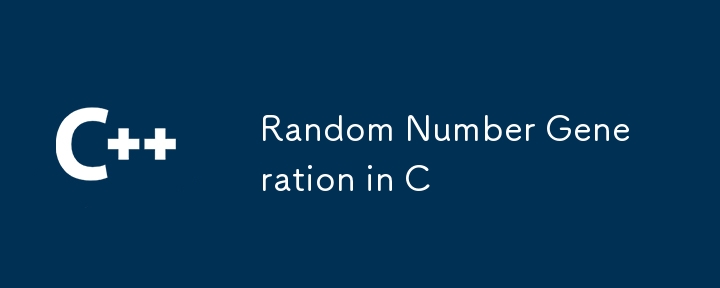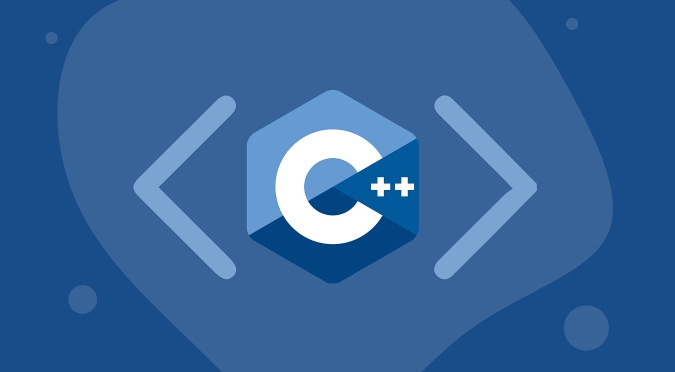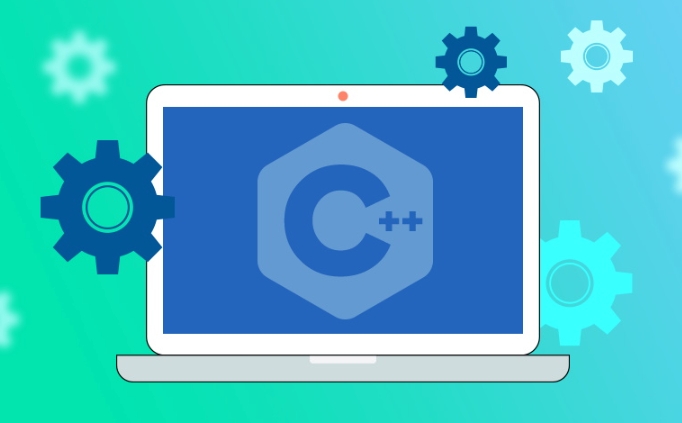Random Number Generation in C
There are two main ways to generate random numbers in C. 1. Use the rand() function in

Generating random numbers is a common requirement in C programming, such as it is used in game development, simulation programs or test data generation. C provides several ways to do this, but it is easy to write code that is not effective or even wrong without understanding the mechanism behind it.

Use the rand() function in <cstdlib></cstdlib>
This is the oldest but also the most common method. rand() returns an integer between 0 and RAND_MAX (usually 32767).
#include <iostream>
#include <cstdlib>
#include <ctime>
int main() {
std::srand(std::time(0)); // Set random seed int randomNum = std::rand(); // Generate random number std::cout << randomNum << std::endl;
return 0;
}-
srand()is used to set the seed. If a different seed is used for each run (such as the current time), the random sequence generated each time the program runs will be different. - If
srand()is not called, the program will generate the same "random" sequence every time it runs. - The problem with this method is uniformity and predictability, and is not suitable for scenarios with high quality requirements.
Using C11's <random> library
If you are using C 11 or later, it is recommended to use a more modern <random> library, which provides more control and better quality of randomness.

#include <iostream>
#include <random>
int main() {
std::random_device rd; // Hardware entropy source, used to generate seed std::mt19937 gen(rd()); // Engine using Mason's rotation algorithm std::uniform_int_distribution<> distrib(1, 100); // Range [1, 100]
int randomNum = distrib(gen);
std::cout << randomNum << std::endl;
return 0;
}-
std::random_deviceis a nondeterministic random number generator that is commonly used to initialize other engines. -
std::mt19937is a commonly used pseudo-random number generator with long cycles and fast speeds. - Distribution objects such as
uniform_int_distributioncan control the range and distribution type of generated numbers (such as normal distribution, Poisson distribution, etc.).
Common misunderstandings and precautions
- Don't repeatedly set seeds : for example, call
srand(time(0))repeatedly in a loop, which will cause the generated sequence to become "less random". - Avoid direct modulo control range : Writing such as
rand() % 100can cause uneven distribution, especially if the range is not a factor of RAND_MAX 1. - C 11's
<random>is more reliable : Although the code is a little more complex, it can provide better randomness and flexibility, suitable for most application scenarios. - Cross-platform behavior may be different : especially the implementation of
rand(), which may behave inconsistently among different compilers.
Basically that's it. Random number generation seems simple, but to be really good, you still need to pay attention to details.
The above is the detailed content of Random Number Generation in C. For more information, please follow other related articles on the PHP Chinese website!

Hot AI Tools

Undress AI Tool
Undress images for free

Undresser.AI Undress
AI-powered app for creating realistic nude photos

AI Clothes Remover
Online AI tool for removing clothes from photos.

Clothoff.io
AI clothes remover

Video Face Swap
Swap faces in any video effortlessly with our completely free AI face swap tool!

Hot Article

Hot Tools

Notepad++7.3.1
Easy-to-use and free code editor

SublimeText3 Chinese version
Chinese version, very easy to use

Zend Studio 13.0.1
Powerful PHP integrated development environment

Dreamweaver CS6
Visual web development tools

SublimeText3 Mac version
God-level code editing software (SublimeText3)

Hot Topics
 1793
1793
 16
16
 1736
1736
 56
56
 1587
1587
 29
29
 267
267
 587
587
 What is a POD (Plain Old Data) type in C ?
Jul 12, 2025 am 02:15 AM
What is a POD (Plain Old Data) type in C ?
Jul 12, 2025 am 02:15 AM
In C, the POD (PlainOldData) type refers to a type with a simple structure and compatible with C language data processing. It needs to meet two conditions: it has ordinary copy semantics, which can be copied by memcpy; it has a standard layout and the memory structure is predictable. Specific requirements include: all non-static members are public, no user-defined constructors or destructors, no virtual functions or base classes, and all non-static members themselves are PODs. For example structPoint{intx;inty;} is POD. Its uses include binary I/O, C interoperability, performance optimization, etc. You can check whether the type is POD through std::is_pod, but it is recommended to use std::is_trivia after C 11.
 How to pass a function as a parameter in C ?
Jul 12, 2025 am 01:34 AM
How to pass a function as a parameter in C ?
Jul 12, 2025 am 01:34 AM
In C, there are three main ways to pass functions as parameters: using function pointers, std::function and Lambda expressions, and template generics. 1. Function pointers are the most basic method, suitable for simple scenarios or C interface compatible, but poor readability; 2. Std::function combined with Lambda expressions is a recommended method in modern C, supporting a variety of callable objects and being type-safe; 3. Template generic methods are the most flexible, suitable for library code or general logic, but may increase the compilation time and code volume. Lambdas that capture the context must be passed through std::function or template and cannot be converted directly into function pointers.
 What is the mutable keyword in C ?
Jul 12, 2025 am 03:03 AM
What is the mutable keyword in C ?
Jul 12, 2025 am 03:03 AM
In C, the mutable keyword is used to allow the object to be modified, even if the object is declared as const. Its core purpose is to maintain the logical constants of the object while allowing internal state changes, which are commonly found in cache, debug counters and thread synchronization primitives. When using it, mutable must be placed before the data member in the class definition, and it only applies to data members rather than global or local variables. In best practice, abuse should be avoided, concurrent synchronization should be paid attention to, and external behavior should be ensured. For example, std::shared_ptr uses mutable to manage reference counting to achieve thread safety and const correctness.
 What is memory alignment and why is it important in C ?
Jul 13, 2025 am 01:01 AM
What is memory alignment and why is it important in C ?
Jul 13, 2025 am 01:01 AM
MemoryalignmentinC referstoplacingdataatspecificmemoryaddressesthataremultiplesofavalue,typicallythesizeofthedatatype,whichimprovesperformanceandcorrectness.1.Itensuresdatatypeslikeintegersordoublesstartataddressesdivisiblebytheiralignmentrequiremen
 How to generate a UUID/GUID in C ?
Jul 13, 2025 am 02:35 AM
How to generate a UUID/GUID in C ?
Jul 13, 2025 am 02:35 AM
There are three effective ways to generate UUIDs or GUIDs in C: 1. Use the Boost library, which provides multi-version support and is simple to interface; 2. Manually generate Version4UUIDs suitable for simple needs; 3. Use platform-specific APIs (such as Windows' CoCreateGuid), without third-party dependencies. Boost is suitable for most modern projects, manual implementation is suitable for lightweight scenarios, and platform API is suitable for enterprise environments.
 C vs Python performance
Jul 13, 2025 am 01:42 AM
C vs Python performance
Jul 13, 2025 am 01:42 AM
C is usually faster than Python, especially in compute-intensive tasks. 1.C is a compiled language that directly runs machine code, while Python executes while interpreting and executing, which brings additional overhead; 2.C determines the type during compilation and manages memory manually, which is conducive to CPU optimization, and Python dynamic typing and garbage collection increase burden; 3. It is recommended to be used for high-performance scenarios such as game engines and embedded systems. Python is suitable for data analysis and rapid development scenarios with priority efficiency; 4. Performance testing is recommended to use time tools, eliminate I/O interference, and average values multiple times to obtain accurate results.
 Understanding move assignment operator in C
Jul 16, 2025 am 02:20 AM
Understanding move assignment operator in C
Jul 16, 2025 am 02:20 AM
ThemoveassignmentoperatorinC isaspecialmemberfunctionthatefficientlytransfersresourcesfromatemporaryobjecttoanexistingone.ItisdefinedasMyClass&operator=(MyClass&&other)noexcept;,takinganon-constrvaluereferencetoallowmodificationofthesour
 Pure Virtual Functions in C
Jul 15, 2025 am 01:52 AM
Pure Virtual Functions in C
Jul 15, 2025 am 01:52 AM
Pure virtual functions are the key mechanisms used in C to define abstract classes and interfaces, and their core role is to force derived classes to implement specific methods. 1. The pure virtual function is declared through virtualvoidfunc()=0; and the implementation is not provided, making the class an abstract class and cannot be instantiated; 2. It is used to simulate the interface to ensure that the subclass must rewrite the method, such as the draw() of the Shape base class in the graphics library; 3. Supports runtime polymorphism, allowing the base class pointer to call the implementation of different subclasses; 4. Although the abstract class cannot create objects, it can contain constructors, member variables and implemented ordinary functions; 5. If the derived class does not fully implement all pure virtual functions, it will also become an abstract class; 6. In special cases, the pure virtual function can provide default implementation for derivation.





